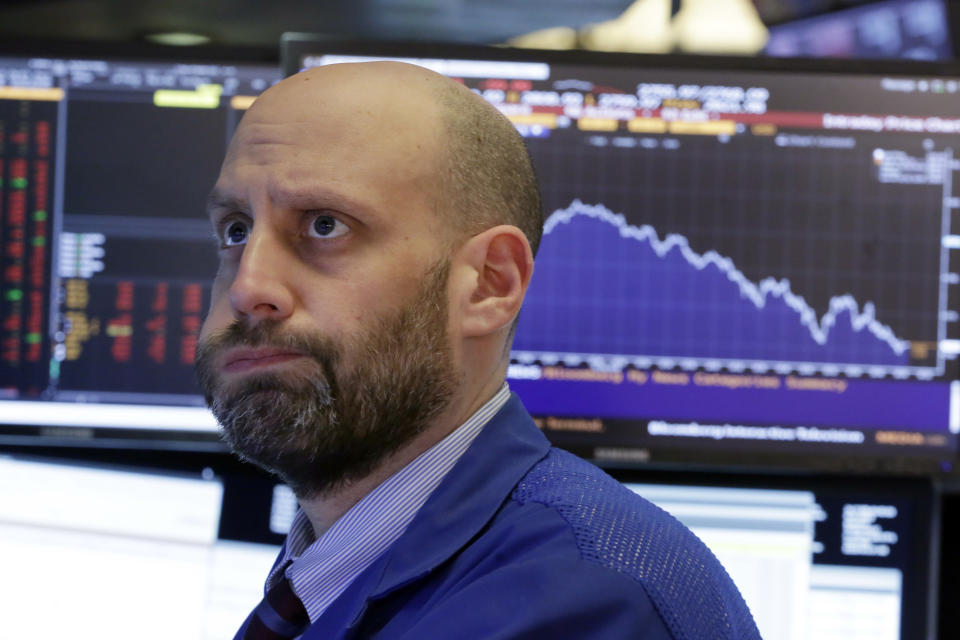Inflation heats up
Consumer prices rose more than expected in January, a sign that inflation could be set to return as a feature of the U.S. economy.
In January, consumer prices rose 0.5% over the prior month and 0.3% over last month on a “core” basis, which excludes the more volatile costs of food and gas, according to the latest numbers from the Bureau of Labor Statistics. Wall Street was looking for a 0.3% and 0.2% increase in these figures, respectively.
Compared to last year, the core consumer price index (CPI) was up 1.8%, more than the 1.7% increase that was expected by economists.
Following this news, markets were volatile. After stock futures initially tanked following Wednesday’s data, the major averages had moved into the green during mid-morning trade with the tech-heavy Nasdaq leading gains, rising 0.7%.

Treasury yields were higher, with the 10-year hitting 2.88% and the 2-year hitting 2.14% as bond markets anticipate potentially more aggressive action on interest rate hikes from the Federal Reserve this year. As of December, the Fed expected it will raise interest rates three times this year.
Fears over inflation pressures, and in turn more aggressive interest rate hikes from the Federal Reserve, were seen as the initial impetus for the stock market sell-off that roiled markets last week.
Including all items, CPI rose 2.1% over the prior year in January, more than the 1.9% that was expected by economists. Markets more closely track the “core” numbers as the Federal Reserve prefers to strip out the more volatile costs of food and gas.
In a note following Wednesday’s report, Jim O’Sullivan at High Frequency Economics said, “We expect core inflation to rise this year, but we don’t view this report alone as definitive evidence that the trend is rising. That said, the data raise the already high likelihood that the Fed will be lifting rates again next month — unless turmoil in financial markets intensifies significantly.”
Michael Pearce at Capital Economics said Wednesday’s report is a sign of things to come for the economy, writing Wednesday, “In 3-month annualised terms, core inflation has already reached 2.9%. Once temporary factors drop out of the annual comparison in the spring, core CPI inflation will be close to 2.5% and we expect it to trend higher from there.”
Torsten Sl?k, chief international economist at Deutsche Bank, noted in an email on Tuesday that economists surveyed by Bloomberg expect core inflation to average 1.8% in the second quarter of the year, up from 1.5% in the first quarter. Wednesday’s report will likely pull forward expectations for faster inflation even more.
“I currently spend significant amounts of time on the phone, emails, and in meetings explaining this coming jump in the March and April inflation data,” Sl?k said. “And I have come to the conclusion that this is not priced in to rates at all.”
Wednesday’s post-report reaction shows the market re-pricing its expectations.
Retail sales whiff
Elsewhere in economic data on Wednesday, retail sales for January missed expectations, falling 0.3% over the prior month against expectations for a 0.2% increase. Peter Tchir at Academy Securities called this report “ghastly” in an email.
“The one premise everyone (including myself) has had during this volatility is that the ‘fundamentals’ are okay,” Tchir said. “This retail sales data puts the uptick in credit card delinquencies seen recently in a potentially different light.”
Ian Shepherdson, an economist at Pantheon Macro, called the retail sales numbers “soft,” but said they were “a reaction to unsustainable [fourth quarter] gains.”
—
Myles Udland is a writer at Yahoo Finance. Follow him on Twitter @MylesUdland
Read more from Myles here:
One candidate for Amazon’s next headquarters looks like a clear frontrunner
Tax cuts are going to keep being a boon for the shareholder class
Auto sales declined for the first time since the financial crisis in 2017
Foreign investors might be the key to forecasting a U.S. recession
It’s been 17 years since U.S. consumers felt this good about the economy
